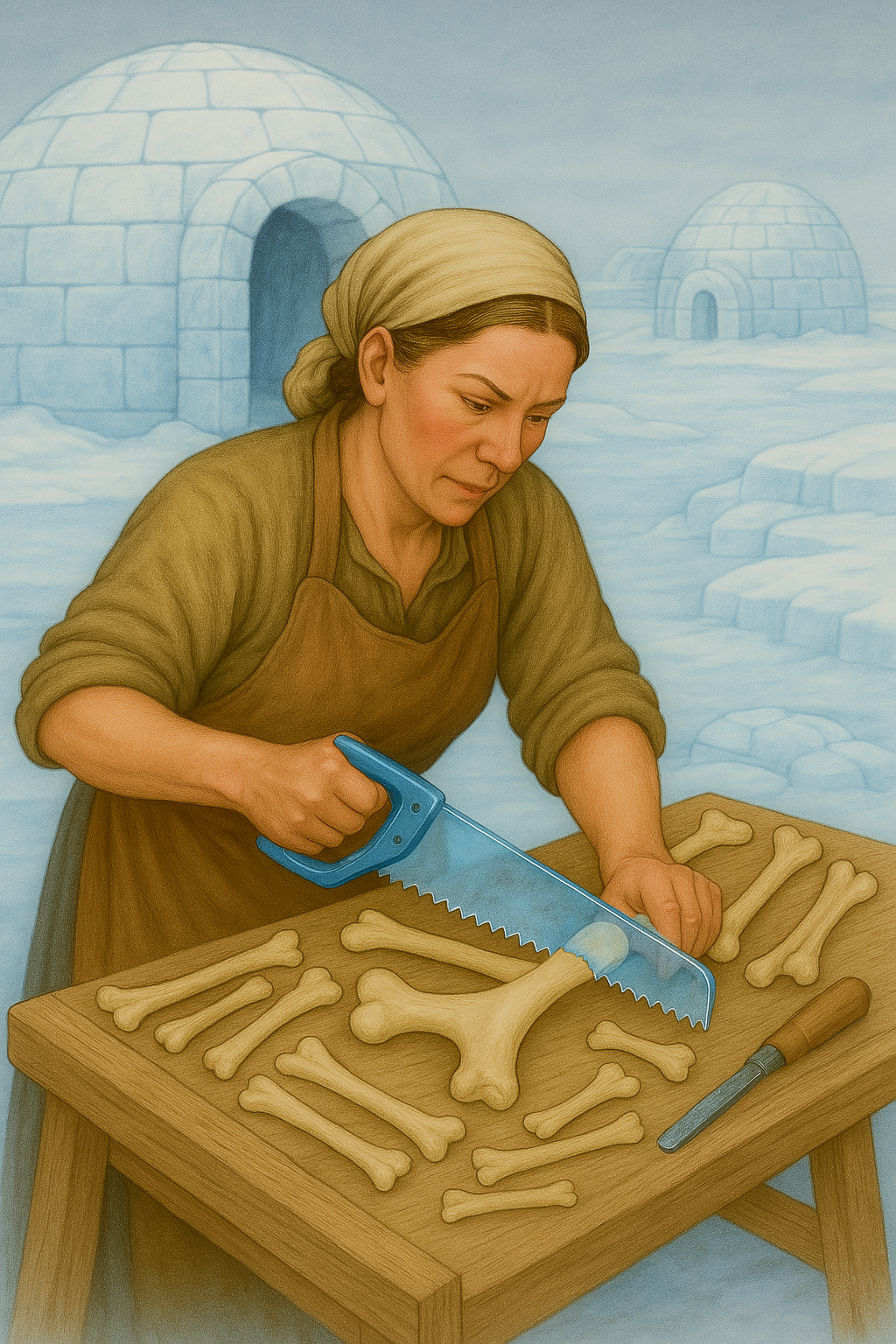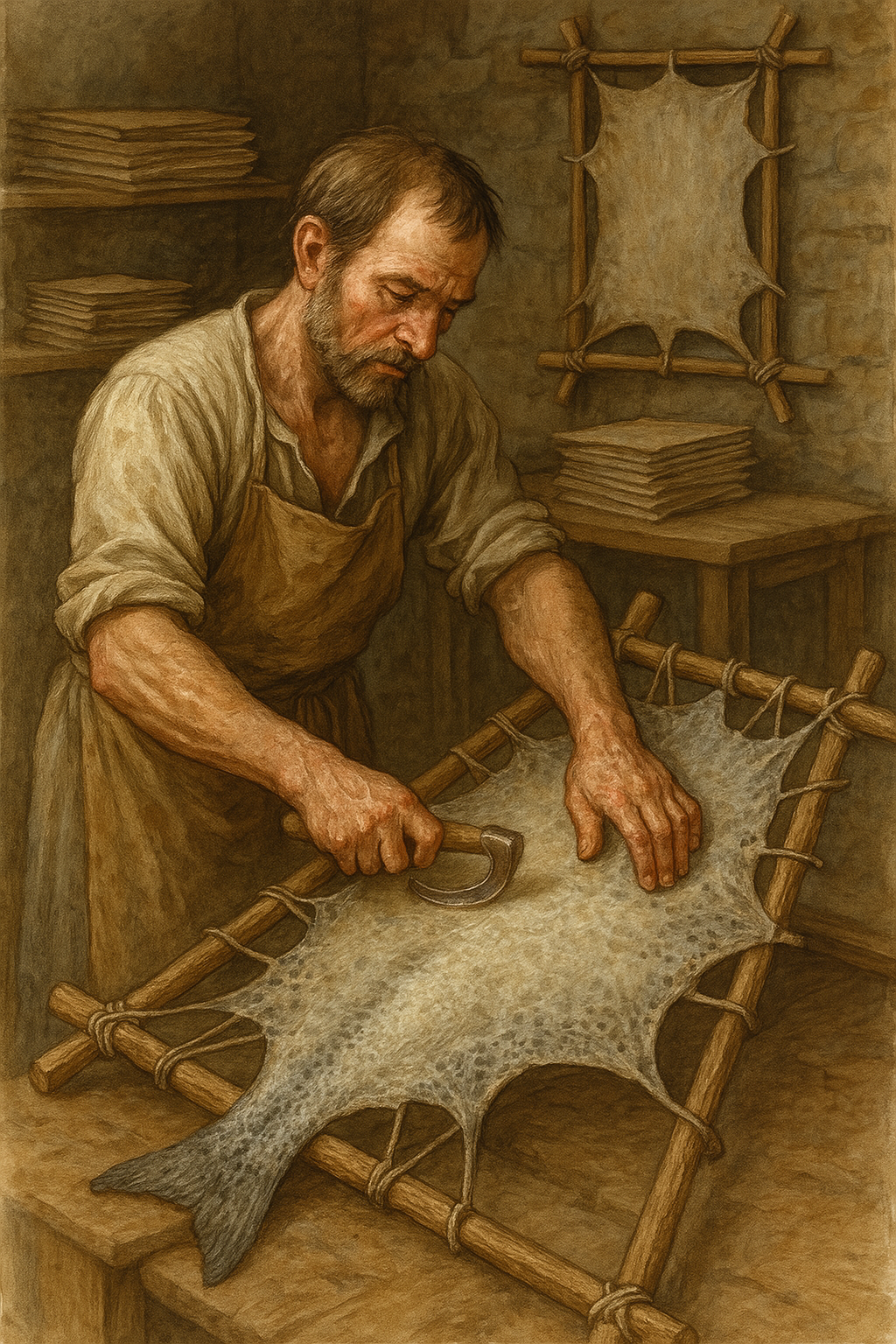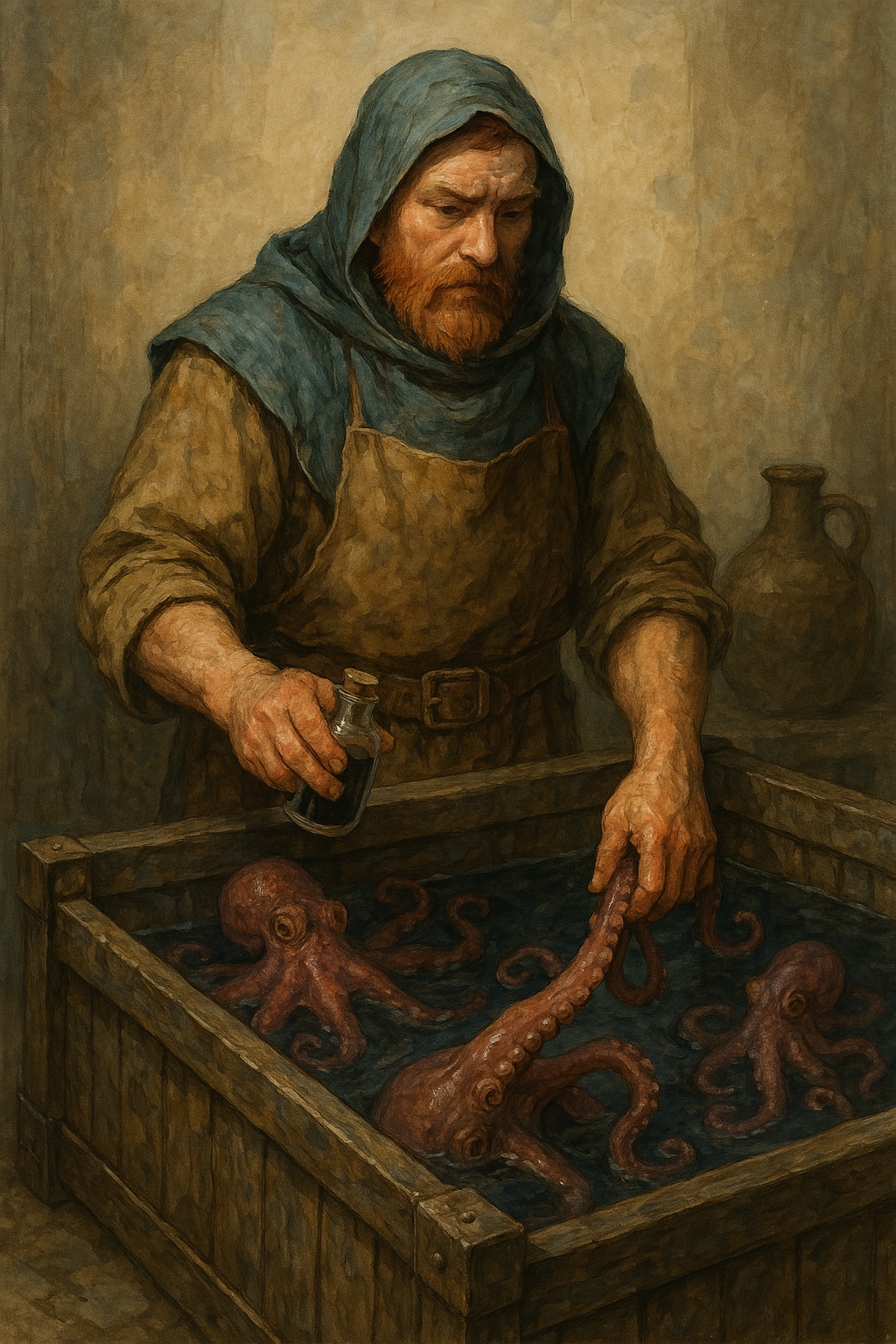Occupations in the production of writing materials and documents
The Parchment Maker
The parchment maker works with large fish skins sourced from local fishermen. These skins must be as intact as possible—minor damage is acceptable as long as the structure remains stable. Processing begins by carefully scraping the skins to remove residual flesh and scales, often using curved tools made from bone or horn. The cleaned skins are then stretched onto frames, secured with tension hooks, and dried in well-ventilated, cool rooms. Depending on weather and skin type, drying can take up to two days. Once dried, the skins are smoothed and trimmed into standardized sizes. Some parchment makers offer full book bindings as well, a task requiring sewing skills, knot work, and a keen sense of structural balance. In Vintergard, quality is consistently high due to strict material selection, while Föndir also processes whale skin—resulting in a broader but more inconsistent quality range. The work is physically demanding, especially due to the stiff posture required for scraping and the manual tensioning of the skins. Hands are often cracked and permanently rough. The profession is highly respected, particularly due to the rarity and strong demand for fine parchment.The Bone Grinder
Bone grinders process bone fragments collected from hunts or large animals. The trade divides into two specializations: rough grinders and fine grinders. Rough grinders shape bone for technical purposes—they cut, drill precision holes, carve grooves, and fit pieces together, often for shipwrights or toolmakers. Tools include grinding stones, frostglass saw blades, and simple hand drills. Fine grinders focus on the surface, polishing, shaping thin plates, preparing discs for later engraving, or treating bone surfaces used in ship and building construction. Depending on complexity, the work ranges from several hours to days—while a simple shield takes roughly half a day, a load-bearing component can take much longer. Bone dust often causes dry skin; fine ridges permanently mark the fingertips, and some wear leather patches for protection. The profession is respected but not particularly prestigious.The Bone Engraver
The bone engraver takes prepared bone pieces and decorates them with text or ornamental patterns. Fine incision blades are used for lines and lettering, while planing tools are employed for broader carvings. For large or deep motifs, bone chisels and small hammers are needed. Engraving demands steady hands, sharp eyes, and a strong sense of the finished design. After carving, items are treated with special fluids—typically oils, resin blends, or algae-based solutions, often with undisclosed recipes. These coatings preserve and visually enhance the engraving. A simple name plate requires one to two hours; elaborate artworks take several days. The most taxing aspects are the strained posture and the meticulous nature of the craft, which tires the eyes and tightens the shoulders. Sealant residues darken the fingertips permanently. The trade’s reputation varies greatly depending on the artisan’s skill and the quality of their work.The Ink and Dye Maker
Ink and dye makers are part animal caretaker, part chemist. They breed squid, coldworms, algae, and mollusks in large water tanks, which must be well-ventilated, cool, and regularly cleaned. Ink is harvested with minimal harm to the creature, requiring patience and expertise. Dyes are made from crushed shell fragments, algae juice, berry extracts, or pigment glands of worms. Processing takes several days to weeks, as pigments need to be stabilized and bound—often with oils or ice-water emulsions. Ink vials are quicker to produce, taking around three to four days, while dye pastes may need up to two weeks. The work is odor-intensive, and many dyes leave permanent skin stains—especially violet, green, and dark brown. Gloves offer only limited protection. The profession is highly esteemed, as quality pigments and ink are expensive and coveted, especially in the cities of Galdra and Skipti. In other regions, simpler inks are used, sometimes made from blood or other animal fluids.The Weapon and Tool Crafter
The weapon and tool crafter uses bone pieces mostly prepared by rough grinders. They can often discern the bone’s intended function simply from its shape—be it dagger, stylus, or tongs. With frostglass saws, file rods, and pressure tools, they shape the bone into the desired form. Tools such as hammers, spoons, and tweezers are crafted alongside weapons—clubs, spearheads, and small blades. A dagger takes about two days to complete, while complex tools can require five. The work is precise and demands experience to avoid breakage. Bone dust irritates the airways, so many wear cloth coverings over mouth and nose. Skin cracks are common, especially in dry weather. Depending on talent and craftsmanship, the profession is highly regarded—especially when an artisan reveals the intended form that was “already hidden” within a single piece of bone.
Created by Selibaque 2025






Kommentare